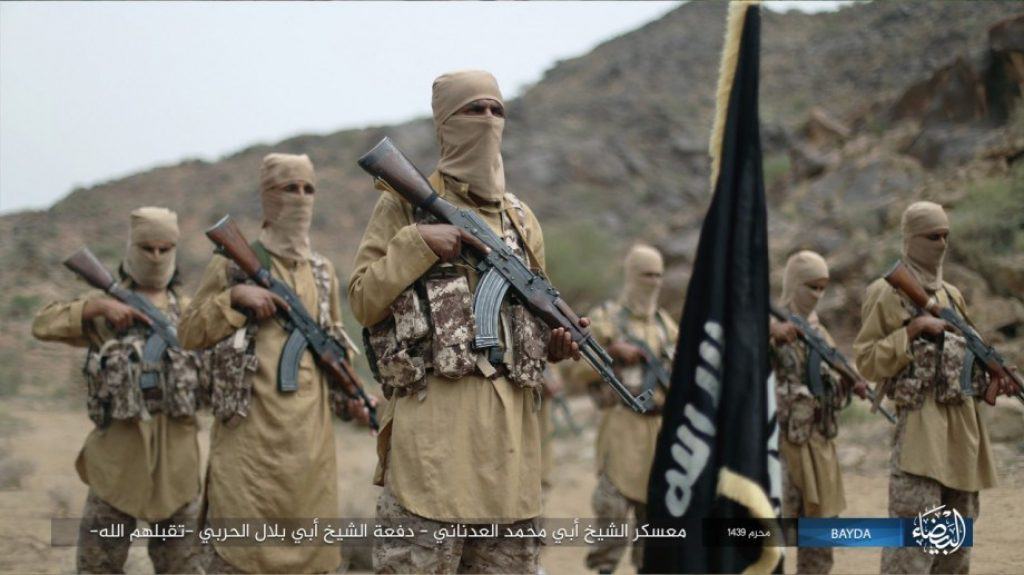
Saudi Arabia announced yesterday that the head of the Islamic State’s arm in Yemen was captured alongside other jihadists earlier this month. The raid was conducted by Saudi and Yemeni special forces, with support from the U.S.
The Saudis identified the Islamic State leader as Abu Osama al-Masri, a nom de guerre indicating that he is likely an Egyptian.
Colonel Turki al-Malki, the spokesman for the Coalition to Restore Legitimacy in Yemen, said the operation took place at 9:20 am on June 3. It’s not clear why Saudi officials waited more than three weeks to announce the successful operation.
“A house kept under close surveillance proved the presence of the terror group’s leader, and other elements, along with three women and three children,” Col. al-Malki explained. No women or children in the house were injured, nor was there any collateral damage to civilians, the Saudis say.
In addition to capturing several of Baghdadi’s loyalists, the Saudis say the “operation also resulted in the confiscation of several weapons, ammunition, laptops, computers, cash in various currencies, electronic devices, GPS devices, communication devices, and other possessions.”
The haul likely provides new intelligence on the so-called caliphate’s operations in the Arabian Peninsula, and possibly elsewhere.
The hierarchy of the Islamic State’s Yemeni branch is murky. Like other jihadist groups, the organization doesn’t publish a personnel chart.
The Saudis say that al-Masri was a leader in Al Qaeda, presumably meaning Al Qaeda in the Arabian Peninsula (AQAP), from 2010 to 2015. He then defected to Abu Bakr al-Baghdadi’s caliphate and rose up its ranks to serve as leader of its Yemeni branch from 2017 until his capture earlier this month.*
If this detail is accurate, then it is an example of how the Islamic State has attempted to poach from al Qaeda’s ranks in Yemen. AQAP rejected Abu Bakr al-Baghdadi’s caliphate declaration in 2014. In more recents months, the two sides have repeatedly clashed. The media teams for both organizations also routinely produce messages criticizing their jihadist rivals.
In a report released earlier this year, the UN named the head of ISIS in Yemen as Abu Shaker al-Muhajer. He may be the same man as Abu Osama al-Masri, as the jihadists often use more than one alias. It is not immediately obvious if that is the case, or if he is a different figure.
Al-Muhajer succeeded another figure, Muhammad Qan’an al-Saya’ri, who is presumed to be dead.
Citing “member states,” the UN claimed that ISIS “now has only a few mobile training camps” and a “dwindling number of fighters” throughout the “whole of Yemen.” These men are reportedly “concentrated in the Thahra area of Jawf Governorate,” while the group is “struggling to keep a foothold on the Qayfah front in Al-Bayda.”
The Islamic State’s “activities” in Al-Bayda “now consist mainly of protecting the group’s leaders and their family members.” The organization “maintains four brigades of 60 members each” and “[r]elatively few foreign terrorist fighters are making their way to Yemen to join” either the Islamic State, or AQAP, according to the UN’s sources.
The US-backed, Saudi-Yemeni raid on ISIS took place in the eastern province of al-Mahra. Along with Abu Osama al-Masri, the Saudis say they captured the group’s “chief financial officer” for the country.
These fact fits well with the UN’s reporting. “In financing its operations in Yemen,” the UN monitoring team’s analysts wrote, ISIS “depends on external support.” The jihadists have smuggled cash “via intermediaries through the Syrian Arab Republic to neighboring Gulf countries, then into Yemen.”
Once the money reached Yemen, the “group’s finance chief, Sanad Al-Jazrawi” would travel “to the city of Ghaydah in Mahra Governorate to receive payments.”
Therefore, the UN reported several months ago that the Islamic State’s main money man for Yemen was traveling to al-Mahra to collect the jihadists’ funding. That same province is where the Saudi-Yemeni raid was conducted and purportedly netted the group’s chief bean counter. However, the Saudis did not provide a nom de guerre or other identity for this Islamic State figure, so it is not clear if it is the same individual.
*This sentence was corrected to say al-Masri was captured, instead of killed.








1 Comment
Excellent ! The very best news out of Yemen in a very, very long time.
While can’t support the seemingly indiscriminate use of air power by the Saudis or Trump’s unfettered support, this operation seems to indicate that we can really help in other ways.